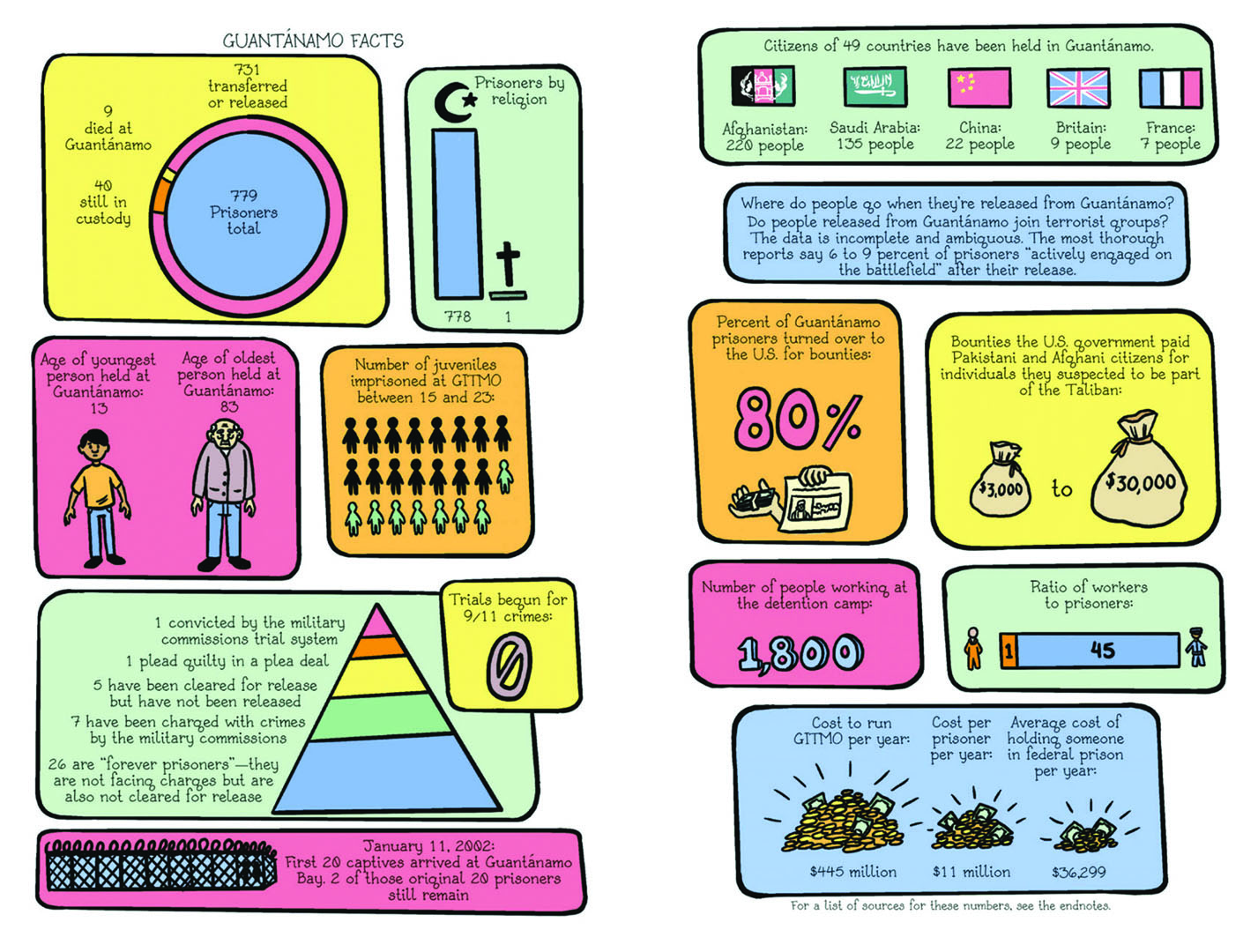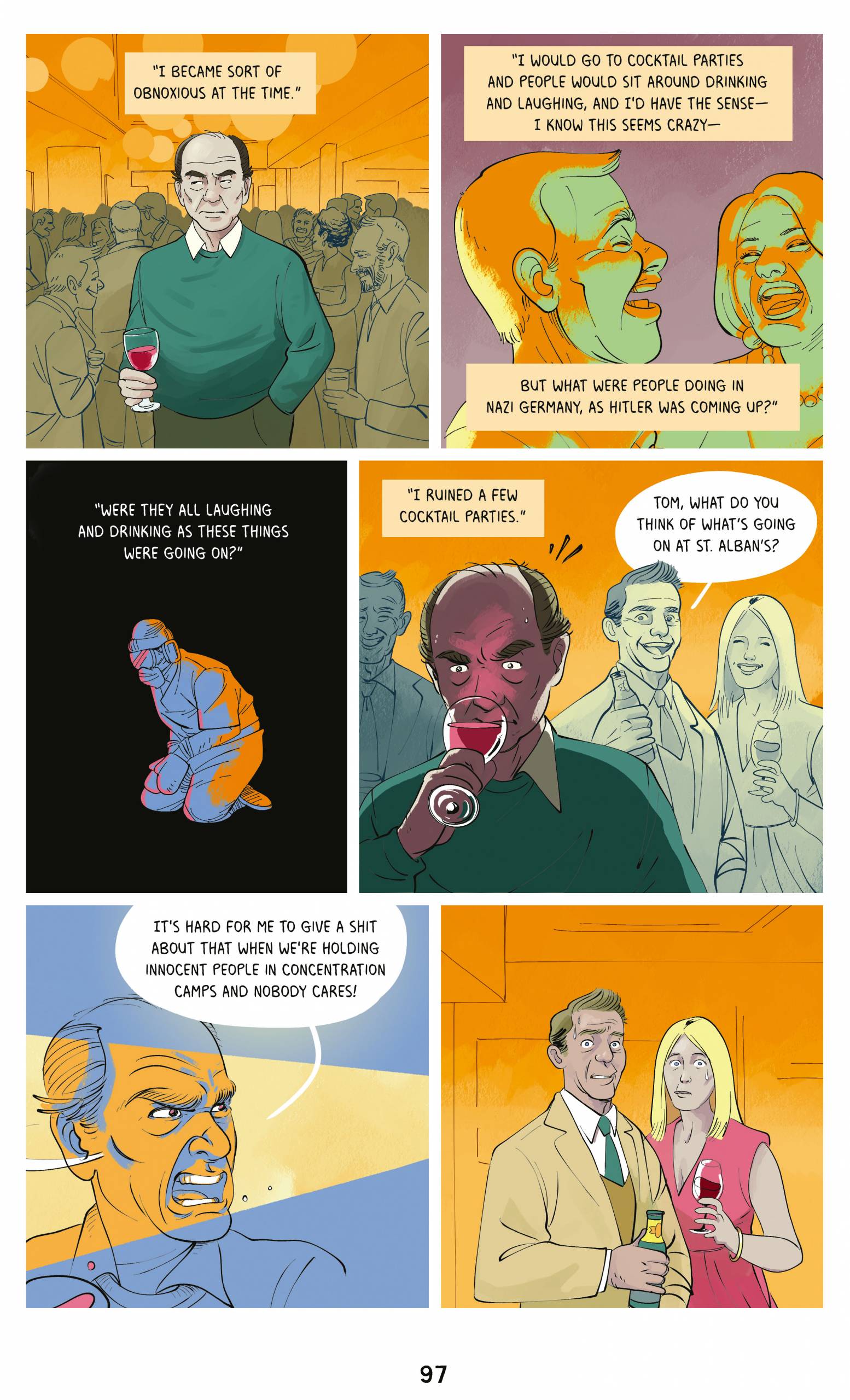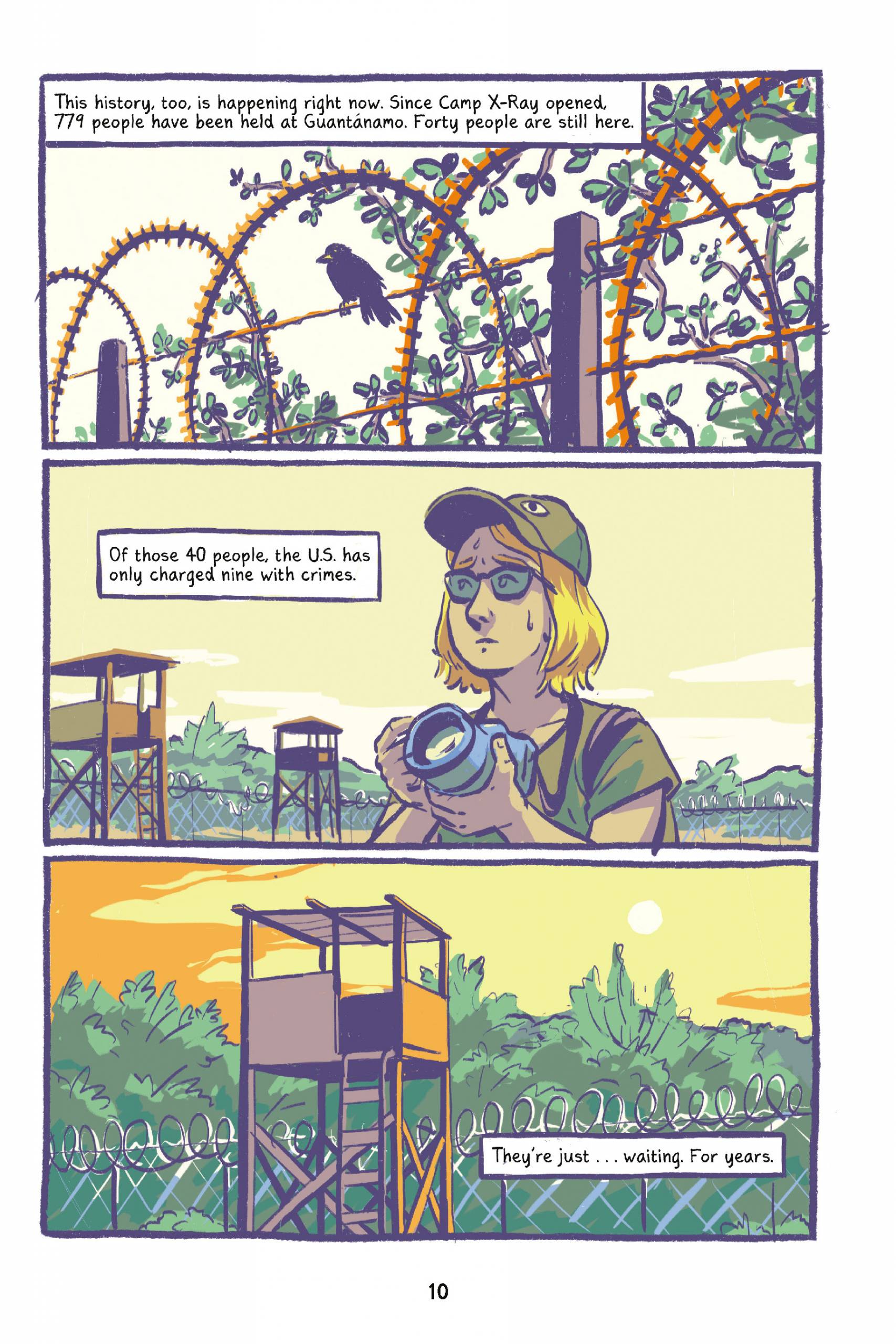As complicated and multifaceted as it might seem, the story of Guantánamo Bay, “the world’s most infamous prison,” is actually quite straightforward. “What I realized while working on this is there’s actually a really simple story here,” says Portland journalist and author Sarah Mirk in a recent Zoom interview. “We put a lot of people in prison and we didn’t put them on trial.”
Mirk is the editor of the new book Guantanamo Voices, a series of 10 illustrated narratives based on true accounts from the prison. The book brings together a talented group of graphic novel artists from around the world, each one illustrating a different perspective on the prison, including oral histories from former prisoners, lawyers, social workers and service members.
The U.S. has held roughly 780 prisoners, mostly Muslim men, at Guantánamo since 2002—and 40 people remain there still.

And yet, the prison is often a forgotten topic of recent American history; Guantanamo Voices’ illustrated format does the difficult work of making these facts accessible to a broad audience, dispelling falsehoods in the process—like the idea that all Guantánamo detainees were dangerous criminals. “A lot of Americans really bought that myth,” says Mirk. “I think it’s worth encouraging people to question the mainstream narrative—is it true? And are we actually OK with it?”
The book also prompts readers to think about what justice might look like, and how we might face this history. Berkeley artist Nomi Kane, who worked on the infographics that open the book, says this project is working to undo some of the dehumanization that allowed torture to exist at Guantánamo. While many of the facts included have been reported elsewhere, Guantanamo Voices uniquely represents individual lives, connecting the prison to other moments in history, including the present day.
The Role of Comics
While some may not see comics as a serious storytelling format, Mirk says they can “make the invisible visible.” The U.S. government has still not allowed significant access to Guantánamo Bay. At one point in the book, Mirk visits the prison on a press trip, but is made to delete a number of her photos afterwards. “It’s hard to see what’s happening there,” she says. “It’s hard to talk to the people who have been in prison there. And it’s hard to actually go and see it for yourself.”
Out of sight, peripheral to everyday Americans’ lives, “it doesn’t really seem like a real place,” she says.

In the absence of photographs, comics and the graphic novel format have the power to make people and places come to life. “You’re seeing the faces of the people who are in the stories,” Mirk says. “You’re seeing their clothes, you’re seeing where they live.” Such images, Mirk explains, can build empathy.
Layout, color and spacing all bring an emotional impact to the work. Without spoiling the ending, the book’s third chapter tells the story of Matthew Diaz, a former navy judge advocate who tried to release information to a lawyer at the Center for Constitutional Rights in a Valentine’s Day card. The story, and the way it’s told, brought tears to my eyes.
Comics also clearly show a perspective; subjectivity is created through each artist’s approach to their material. “There’s no pretense to this being some sort of removed pseudo-objective journalism,” Mirk says.
A challenge within that stylization is to make sure the illustrations don’t come off as too goofy or playful. Kane says it’s a balance between creating something visually interesting that will draw people in and the fact that the content is very serious. “I didn’t give Fidel Castro giant googly eyes,” she says, “That belongs in a different context.”

Historical Parallels and Contemporary Relevance
One of the strongest elements of Guantanamo Voices is its ability to connect the prison to other events in American history, including the internment of Japanese Americans during WWII. During Mirk’s research process, she realized Fred Komatsu, whose fight against his own internment reached the U.S. Supreme Court, wrote a brief in support of Guantánamo prisoners. This link made its way into the book, as well as the more recent connection of detaining migrants at the U.S.-Mexico border.
“Once America said it was okay with putting foreign citizens into prison without charges for an indefinite period of time, that changed what we, as Americans, would accept as being OK,” Mirk says.
Ideally, Mirk would like to see the book used in educational contexts. And 30 years from now, she wants us to be able to look back and say: “We fundamentally misunderstood what we did there as Americans. We’ve been able to change and we’ve been able to push for accountability … for some semblance of justice for these people.”

Sarah Mirk will discuss ‘Guantanamo Voices’ with contributors Tracy Chahwan, Gerardo Alba and Alexandra Benguez on Tuesday, Sept. 15 via Skylight Books. Details here.